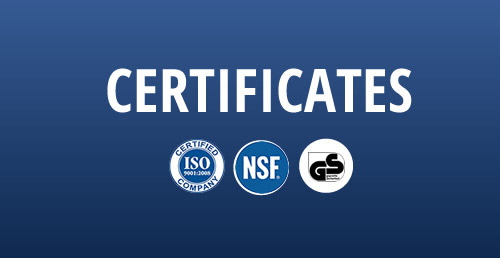Understanding Wedge Anchors and Their Role in Securing Anchor Bolts
Understanding Wedge Anchors A Crucial Component in Construction
Wedge anchors, often referred to as wedge bolts, are a popular type of fastener used for anchoring structural components in concrete. Their design allows for a secure and reliable connection, making them a preferred choice in various construction applications. This article delves into the characteristics of wedge anchors, their installation process, and their benefits, emphasizing why they are essential in the field of construction.
What is a Wedge Anchor?
A wedge anchor comprises a threaded rod, a conical end, and a wedge-shaped section that expands when installed in concrete. The cone is shaped such that, when the bolt is driven into a pre-drilled hole, the wedge expands, gripping the sides of the hole. This design creates a strong mechanical lock that can withstand tension and shear loads, making wedge anchors suitable for both light and heavy-duty applications.
Common applications of wedge anchors include securing machinery, installing railings, and anchoring electrical equipment. They are particularly effective in outdoor settings, as they are often made from galvanized or stainless steel, offering resistance to corrosion and ensuring long-term durability.
Installation Process
Installing wedge anchors requires careful attention to detail to ensure a strong and secure hold. Here’s a step-by-step guide to the installation process
1. Select the Right Wedge Anchor Choose an anchor that is appropriate for the load requirements and the type of concrete. Consider the diameter and length needed based on the thickness of the material being anchored.
2. Drill the Hole Using a hammer drill with a carbide bit, drill a hole into the concrete at the desired location. The hole diameter should match the wedge anchor’s diameter, and it should be drilled to a depth that accommodates the anchor while allowing for proper embedment.
3. Clean the Hole Remove any dust, debris, or loose concrete from the hole using a wire brush or compressed air. Cleaning is crucial as any remaining particles can affect the anchor's holding strength.
4. Insert the Anchor Place the wedge anchor into the hole, ensuring it is perpendicular to the surface of the concrete. The top of the anchor should sit flush with the surface.
wedge all anchor bolts

5. Tighten the Nut As you tighten the nut on the bolt, the cone-shaped section of the anchor will draw upward. This action forces the wedge to expand against the sides of the hole, creating a secure bond. It’s essential to adhere to the manufacturer’s torque specifications to avoid over-tightening, which can lead to anchor failure.
6. Check the Installation After installation, perform a visual inspection to ensure that the anchor is properly seated and that there are no visible gaps or misalignments.
Benefits of Wedge Anchors
Wedge anchors offer several advantages that make them an ideal choice for anchoring in concrete
1. High Load Capacity Their unique design allows wedge anchors to handle significant tension and shear loads, making them suitable for a wide range of applications.
2. Versatility They can be used in various concrete types, including solid, hollow, and even precast concrete, which adds to their versatility.
3. Corrosion Resistance Many wedge anchors are treated with coatings such as zinc or are made from stainless steel, allowing them to withstand harsh environmental conditions without degrading.
4. Ease of Installation Despite the need for precise drilling, wedge anchors are relatively easy to install compared to other fastening systems, reducing labor costs and time on-site.
5. Non-Destructive When installed properly, wedge anchors do not cause significant damage to the concrete, maintaining the integrity of the structure.
Conclusion
Wedge anchors play a pivotal role in construction, providing secure and dependable anchoring solutions for various applications. Their ease of installation, combined with their high load capacity and durability, makes them an essential component in ensuring the safety and stability of structures. As construction continues to evolve, the importance of reliable fastening systems like wedge anchors cannot be overstated, cementing their place as a staple in the industry.
-
Weatherproof Plastic Expansion Anchors for OutdoorNewsJun.06,2025
-
Sustainability in the Supply Chain: Eco-Friendly TEK Screws ProductionNewsJun.06,2025
-
Load-Bearing Capacity of External Insulation FixingsNewsJun.06,2025
-
Double Head Bolts: Enhancing Efficiency in Industrial MachineryNewsJun.06,2025
-
Corrosion Resistance in Chipboard Screws: Coatings for Wholesale DurabilityNewsJun.06,2025
-
Butterfly Toggle Bolts : Enhancing Structural ResilienceNewsJun.06,2025
